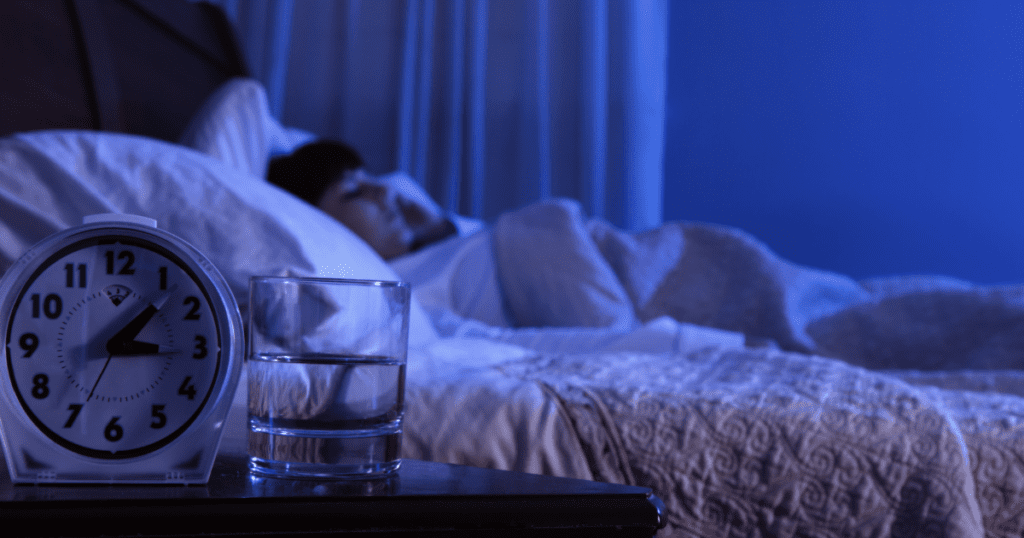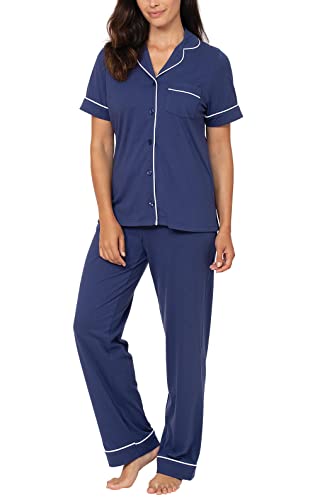It’s late. We’re sleepy. We go through our nighttime routine and crawl into our cozy beds ready to slip into a blissful slumber. We doze off, hit our REM states, and start dreaming we’re in a 110-degree desert with no water or airflow. We start seeing saguaros and mirages of refreshing bodies of water. Then we wake up and realize our bodies actually believed we were in a 110-degree desert. With no water or airflow. We’re burning up. We throw off the covers, find a cooler spot in the bed, and ride it out. Alas.
Hot flashes are arguably the most annoying part of perimenopause and menopause. And perhaps more annoying is the fact that they’re worse at night. We just want a good, uninterrupted 8 hours of sleep! It’s not too much to ask.
So why are hot flashes worse at night? And more importantly, how can we prevent them from happening? Let’s dive into this. Be sure to read to the end to get my favorite tips for reducing hot flashes at night.
What are Hot Flashes?
Hot flashes are a sudden feeling of extreme body heat, sweating, and discomfort. They typically last 5-10 minutes and are most commonly associated with women in menopause. Hot flashes can begin in perimenopause, which typically starts between your mid-40s and early 50s, and they can last well after perimenopause ends, known as post-menopause.
Even after much research, scientists have still not determined exactly why or how hot flashes occur. They know they correlate to estrogen, which is why estrogen therapies work so well to mitigate them. However, researchers have found no difference in the level of estrogen in women who have hot flashes and those who don’t.
As many as half of women in perimenopause experience hot flashes, and roughly 75% of women will have experienced them by the time they’re in post-menopause. They are most likely to occur at night but can also happen during the day. Hot flashes vary in intensity from woman to woman, and some women report not experiencing them at all.
What Causes Hot Flashes?
While scientists haven’t determined exactly how hormonal changes cause hot flashes, most research points to a drop in estrogen levels. During perimenopause and menopause, our estrogen drops significantly, which causes our hypothalamus (our body’s thermostat) to become sensitive to changes in body heat. It can then overreact as our body gets warm and start hot flashes as a way to cool us down.
During a hot flash, our blood vessels start to dilate to increase blood flow to the surface of the skin to radiate off the body heat. This can cause our skin to become flushed. Our sweat glands may also release sweat to cool us down even further.

Why are Hot Flashes Worse at Night?
When we get hot flashes at night, they’re referred to as night sweats. There are a few factors that contribute to hot flashes becoming worse at night.
First is our hormone levels. We discussed earlier that changes in our estrogen levels were the most likely cause of hot flashes. During the night, our hormone levels change even more dramatically causing us to get night sweats.
Second is our diet. Consuming caffeine, alcohol, and spicy foods can contribute to hot flashes at night. Each of these naturally causes an increase in body heat, and as we learned earlier, this throws our hypothalamus into a tailspin and our bodies overreact to try to cool us down.
Lastly is the temperature. Most of us sleep with sheets and/or a blanket of some sort. This additional layer creates additional body heat. Also, if the room temperature is warm this can contribute to night sweats being worse.
How Can You Reduce Hot Flashes?
You can try a few tips to stay cool and reduce hot flashes at night. First is to watch what you eat and drink. Experiment with whether you find a correlation between alcohol and night sweats, or caffeine and night sweats. If you do find a correlation, you’ll want to limit those substances at nighttime to get a better night of sleep. Spicy foods and sugar are other possible triggers that you can monitor.
Second is to make a cooler environment at night. Try turning down the thermostat during sleeping hours. Or turn on a ceiling fan or standalone fan. Also, wear cool and comfortable PJs made of cotton or silk (no flannel!) like the ones below. Grab a cooling pillow made from memory foam with a cool, silky fabric. Lastly, ditch your duvet or comforter for a lightweight cooling blanket. Taking these four steps will work wonders for getting a cool night of sleep.
Finally, if these steps are not working and you’re still struggling with hot flashes at night, talk to your doctor about whether hormone therapy replacement is right for you. This is a highly individualized decision that each woman must make on her own after doing research, talking with a medical professional, and weighing the pros and cons.
Another prescription that is a nonhormone option is paroxetine, a selective serotonin reuptake inhibitor (SSRI) antidepressant. It has been approved by the FDA for treating hot flashes. The prescribed dosage for hot flashes is generally lower than that for depression.
Summary
Most of us will have to deal with hot flashes at some point in our 40s or 50s. And they’re more likely to happen at night than during the day. Avoid your triggers and cool down your sleeping environment to get a better night of sleep. You’ll be happy you did.







